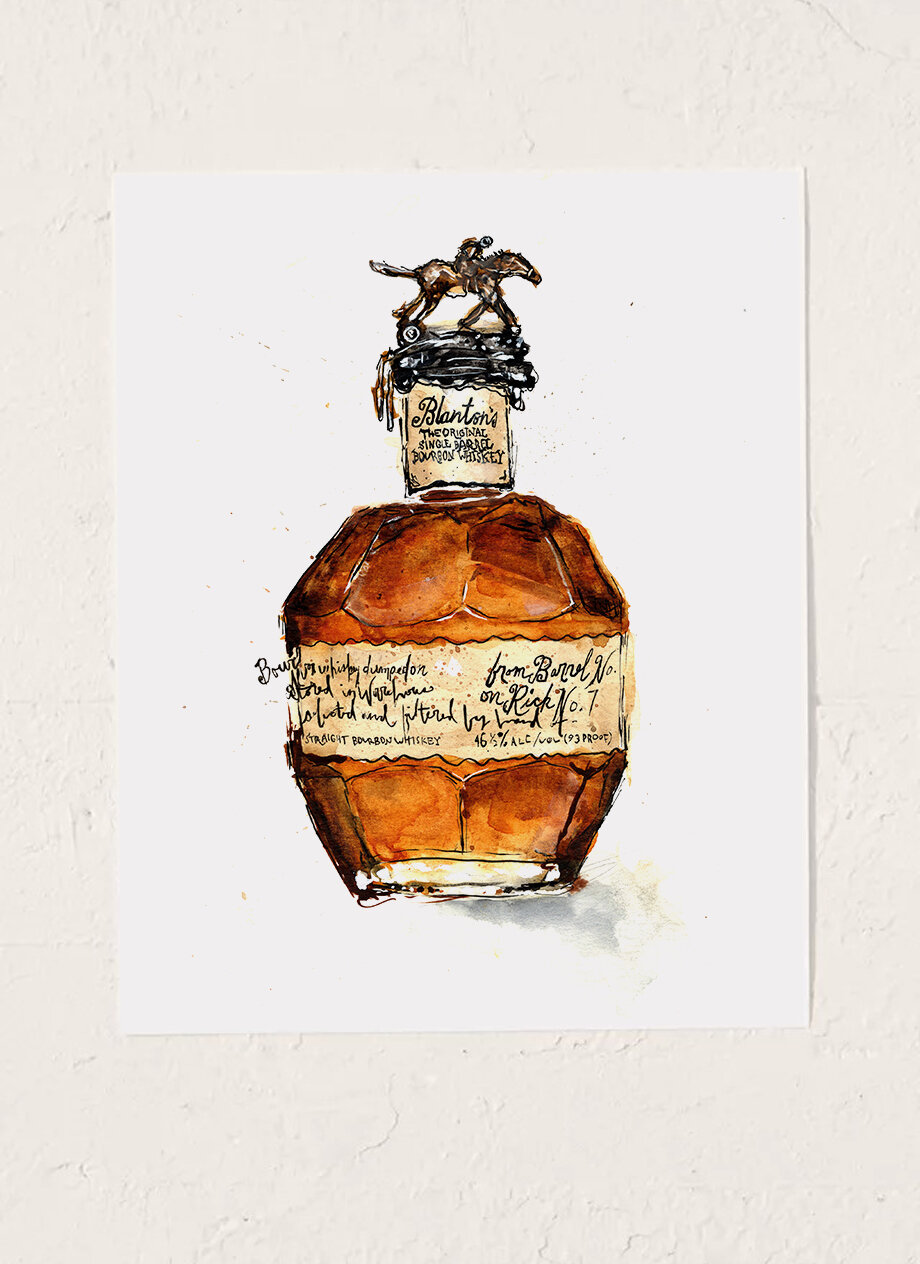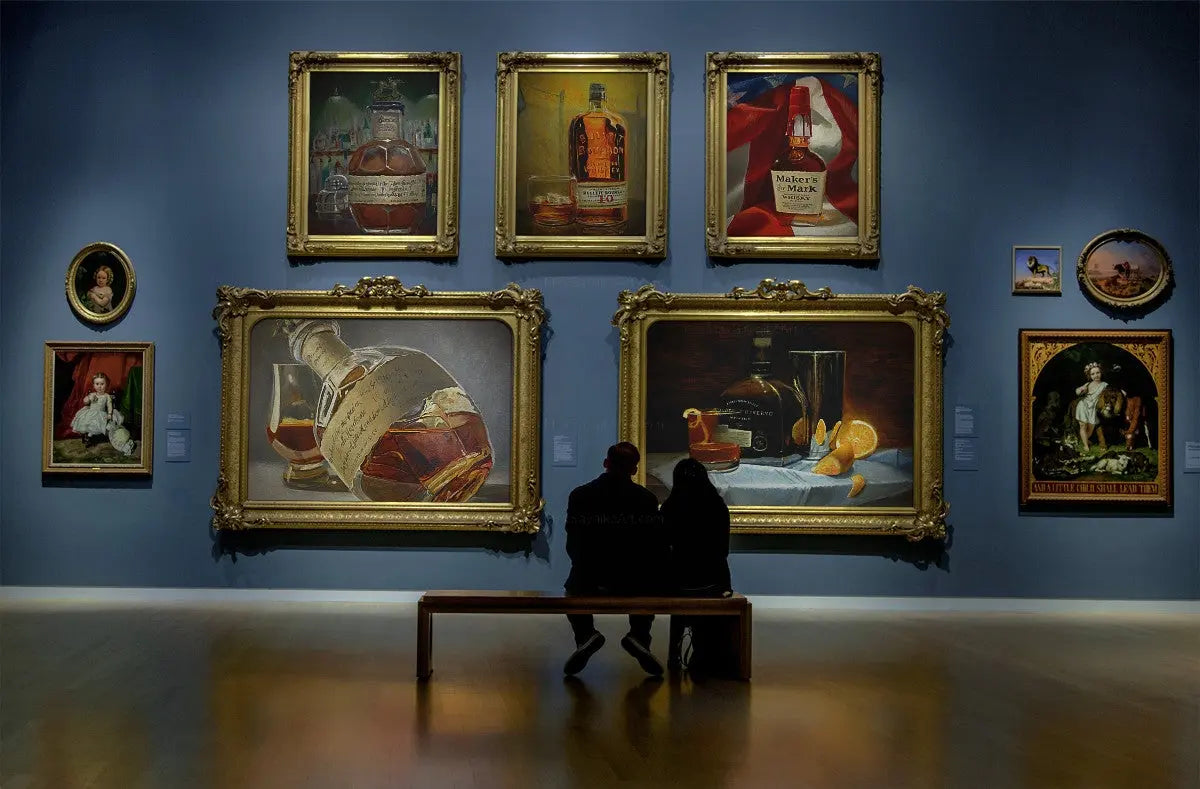Transform Your Area with Spectacular Whiskey Art Inspired by Nature
Transform Your Area with Spectacular Whiskey Art Inspired by Nature
Blog Article
The Significance of Whiskey Art in Celebrating Heritage and Craftsmanship in the Beverage Sector
The elaborate relationship in between whiskey art and the party of heritage and workmanship within the drink industry can not be overemphasized. With thoughtfully made tags and bottles, bourbon brands envelop their historic roots and the artisanal abilities that define their manufacturing techniques.
The Historic Roots of Whiskey
At the heart of scotch's allure exists a rich tapestry of historic origins that trace back to old people. The origins of scotch can be linked to the purification techniques of the Sumerians and Babylonians around 2000 BCE, where very early kinds of fermented grain beverages started to emerge. Nevertheless, it was in the Middle Ages that the art of purification progressed dramatically, specifically in Ireland and Scotland, leading to the production of bourbon as we understand it today.
The term "bourbon" itself stems from the Gaelic word "uisce beatha," implying "water of life." This expression emphasizes the cultural importance of scotch in Celtic societies, where it was often connected with routines, parties, and public bonding. By the 15th century, distillation became an acknowledged craft within reclusive areas, leading the means for the establishment of legal distilleries.
As trade routes broadened, scotch's appeal expanded, going beyond local borders and recording the interest of connoisseurs worldwide. Limited Edition. This historic trip mirrors not just the workmanship behind bourbon manufacturing yet additionally its indispensable duty in social and social contexts, noting it as a substantial drink throughout background
Artistic Expression in Branding
Bourbon branding stands as an engaging junction of virtuosity and business, where aesthetic identity plays a vital duty fit consumer understanding. The aesthetics of whiskey tags, product packaging, and advertising and marketing products show not only the brand name's tale however likewise its core values and heritage. Through imaginative expression, distilleries share a narrative that resonates with consumers, stimulating feelings and sparking connections.
Making use of shade, typography, and images in branding serves to set apart products in a saturated market. For instance, typical themes might stimulate a sense of credibility and craftsmanship, while modern-day designs can indicate advancement and forward-thinking. This critical artistic instructions enhances brand acknowledgment and loyalty, permitting consumers to build a personal connection with the bourbon they select.
In addition, artistic expression in branding usually functions as a party of regional heritage. Distilleries often include regional icons or historical recommendations right into their styles, developing a feeling of location that welcomes customers to take part in a wider social experience. Ultimately, the creativity behind bourbon branding not just enhances visual charm yet also enhances the total narrative of the brand, promoting a much deeper appreciation for the craftsmanship and heritage ingrained in each bottle.
Workmanship in Container Design
The creativity noticeable in bourbon branding extends beyond aesthetic identification to incorporate the workmanship involved in bottle design. Each bottle serves as a vessel not just for the spirit within, however likewise for the story it outlines its top quality, practice, and beginning. The style process needs precise attention to detail, as elements such as material, closure, and form add dramatically to the total assumption of the scotch.
Craftsmanship in container design entails picking high-grade glass that can improve the scotch's color and quality, while additionally supplying a tactile experience for the consumer. The shape of the bottle must be both useful and cosmetically attractive, commonly showing the heritage of the brand. Several distilleries select distinct shapes or printed logos that stimulate a sense of authenticity and background.
Furthermore, the tag style and typography play an important role in connecting the brand's story. Whiskey Art. A well-crafted container not only astounds the consumer's eye but likewise reinforces the brand name's commitment to high quality and tradition. By doing this, the craftsmanship of container design comes to be an important facet of the whiskey experience, combining artistry with an extensive regard for heritage
Cultural Value of Whiskey Art
Commemorating practice and craftsmanship, the social significance of scotch art goes beyond mere visual appeals, linking with the social and historical stories of the regions from which it stems. Each bottle serves as a canvas, illustrating the unique stories, mythology, and practices that have shaped neighborhood whiskey-making practices. The elaborate styles often reflect the heritage of the distillers, integrating icons and motifs that resonate with the culture and worths of their areas.

Furthermore, bourbon art plays a crucial function in communal events and parties, acting as a tangible link in between individuals and their shared experiences. By valuing the artistry in bourbon product packaging, consumers grow a deeper understanding and regard for the craft, inevitably enhancing their pleasure of the drink itself.
Modern Trends in Scotch Presentation
Recently, the discussion of scotch has advanced to mirror modern preferences and patterns while still honoring traditional workmanship - Whiskey Art. Distilleries are significantly concentrating on aesthetic components that enhance the overall drinking experience, bridging the void between heritage and modernity
Ingenious container styles have emerged, often integrating sustainable products and imaginative labels that inform engaging stories. Numerous brand names currently team up with regional musicians, instilling their over at this website items with one-of-a-kind visual expressions that reverberate with consumers. Additionally, limited-edition releases are often packaged in collectible containers, including worth and allure for lovers.

Final Thought
Finally, bourbon art functions as home an important channel for sharing the heritage and craftsmanship intrinsic in the beverage market. With elaborate branding, cutting-edge bottle designs, and culturally considerable creative components, whiskey brands efficiently honor their customs and get in touch with customers. This imaginative story not just raises the recognition of scotch however likewise reinforces community identification and satisfaction amongst producers. Ultimately, whiskey art plays an important role in preserving and celebrating the abundant social tapestry of whiskey-making.


Craftsmanship in container style entails picking high-grade glass that can improve the scotch's color and clarity, while likewise giving a responsive experience for the consumer. In this way, the craftsmanship of container layout comes to be a crucial element of the scotch experience, merging artistry with a profound regard for heritage.
In verdict, scotch art serves as a vital channel for revealing the heritage and workmanship intrinsic in the beverage industry.
Report this page